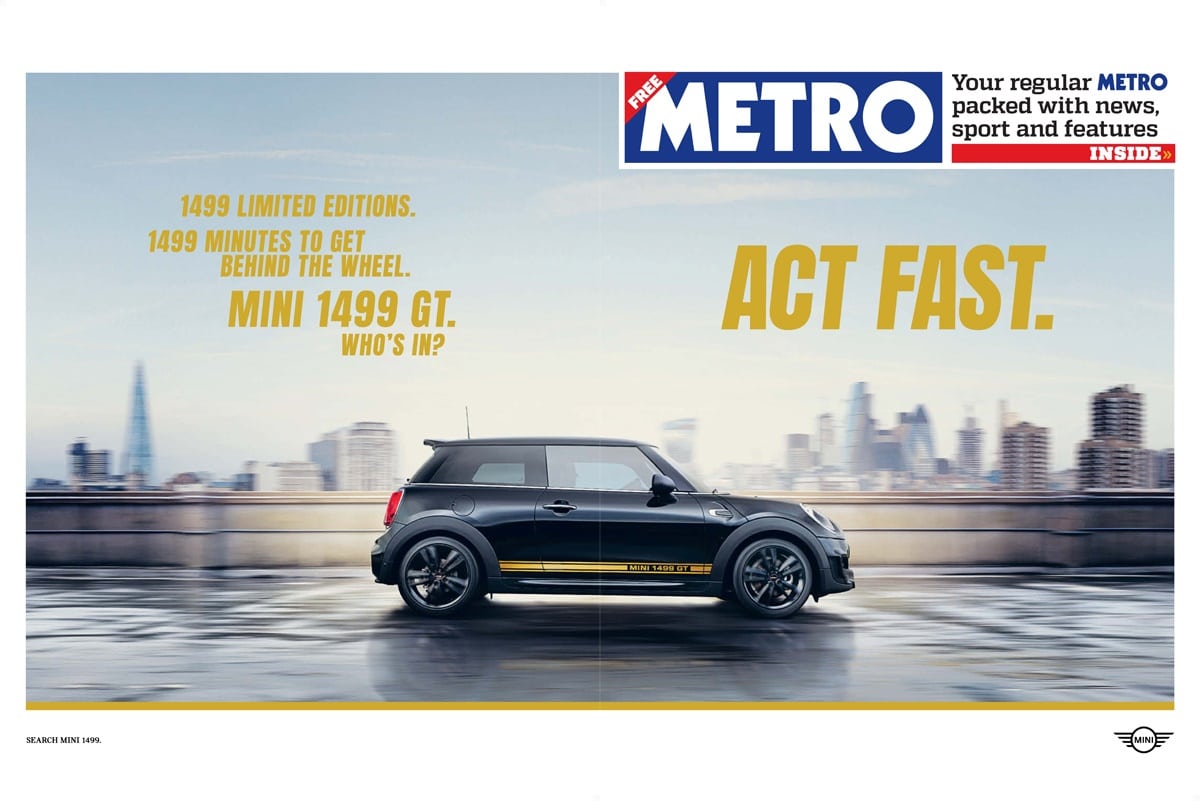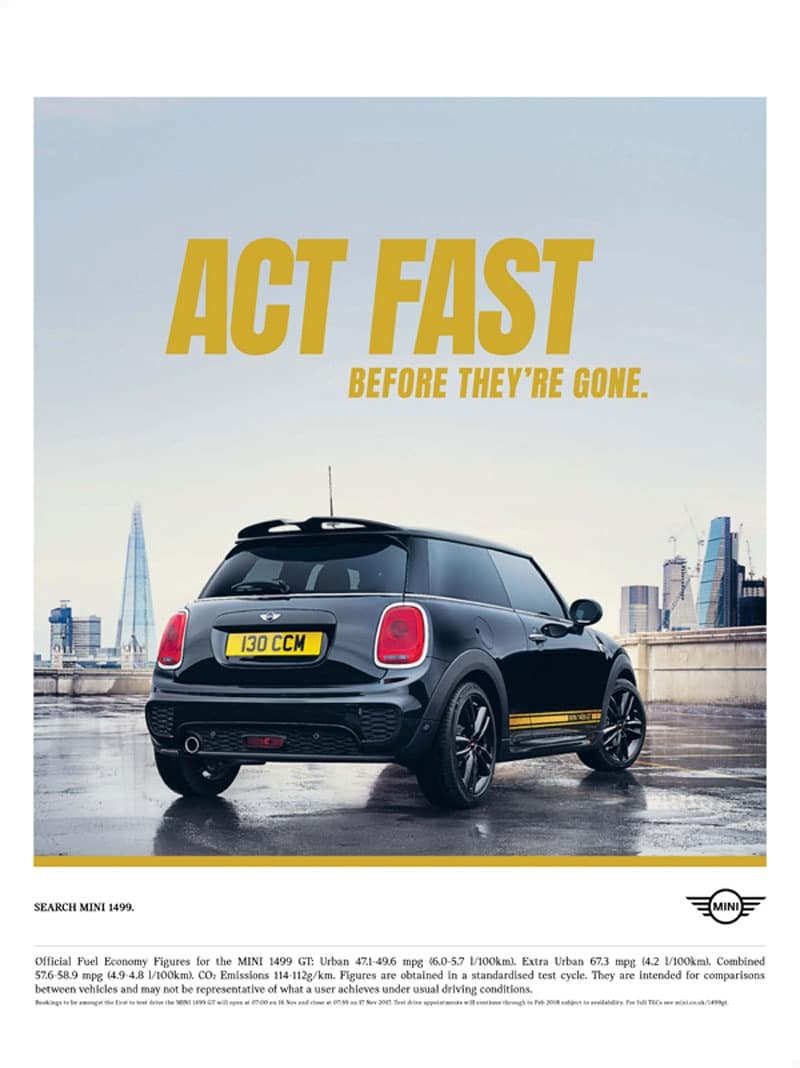Case study – Objective: Prompt action
Throughout 2017, MINI faced two significant challenges. Firstly, the entire automotive market was shrinking and, secondly, people were taking fewer test drives. What’s more, while creating impact for the launch of the MINI 1499GT was vital, outspending the competition wasn’t an option.
The solution lay in behavioural economic theory: scarcity bias and costly signalling. While the former plays into the power of FOMO by restricting availability and supply, the latter conveys a brand’s confidence in a product via perceived expensive and elaborate investment.
MINI’s campaign utilised both of these theories to great effect. By limiting the amount of test drives and vehicles available – which was reinforced through the campaign’s time sensitive messages and phasing – a sense of urgency was created.
Meanwhile, by teaming up with Metro for a fivepage cover wrap across print and digital editions, MINI dominated a high quality, unmissable media format. This was supported by a dynamic 1,499 minute countdown across digital media.
The strategy not only led to impressive results, but managed to achieve them cost-effectively without compromising MINI’s longer-term brand objectives of increasing quality and value perceptions.
This was a clear winner – the campaign used an interesting and novel approach to get to a really creative and effective execution.
Charlie Ebdy, chief strategy officer, Vizeum



